Solutions
The Aviation Challenge is a collaborative accelerator driving tangible solutions across the aviation industry. Through a friendly competition, TAC participants work on real-life initiatives aimed at reducing the environmental impact of their operations.
In a TAC context, solutions refer to tested innovations that reduce aviation’s environmental impact across key operational areas.
Aim & Ambitions
By focusing on what’s possible rather than what’s not, TAC places sustainability high on the agenda for aviation stakeholders. It fosters a community of practice that takes action—starting small but thinking big. Through testing sustainable alternatives, TAC acts as an accelerator for change, encouraging airlines and industry players to lead the transition.
How It Works
TAC embraces the game of marginal gains—offering a space to test novel ideas on a small scale and prove their viability. Participants develop solutions within their own organizations, trial them during the TAC showcase flight, and share outcomes with peers. This creates a foundation for broader adoption and industry-wide impact. TAC is a testing ground that encourages experimentation, learning, and scaling what works.
Facts & Figures
In 2024, participating airlines submitted 327 solutions, with 18 earning awards for demonstrating a deep investment in long-term progress through the strategic implementation of solutions within their organizations and operations. Two of these award categories specifically recognized airlines that showed exceptional commitment to adopting and building on solutions from previous editions of the Challenge.
250
Total Solutions
in the Repository
24
Total Airlines
Participated
12
Communities of
Practice
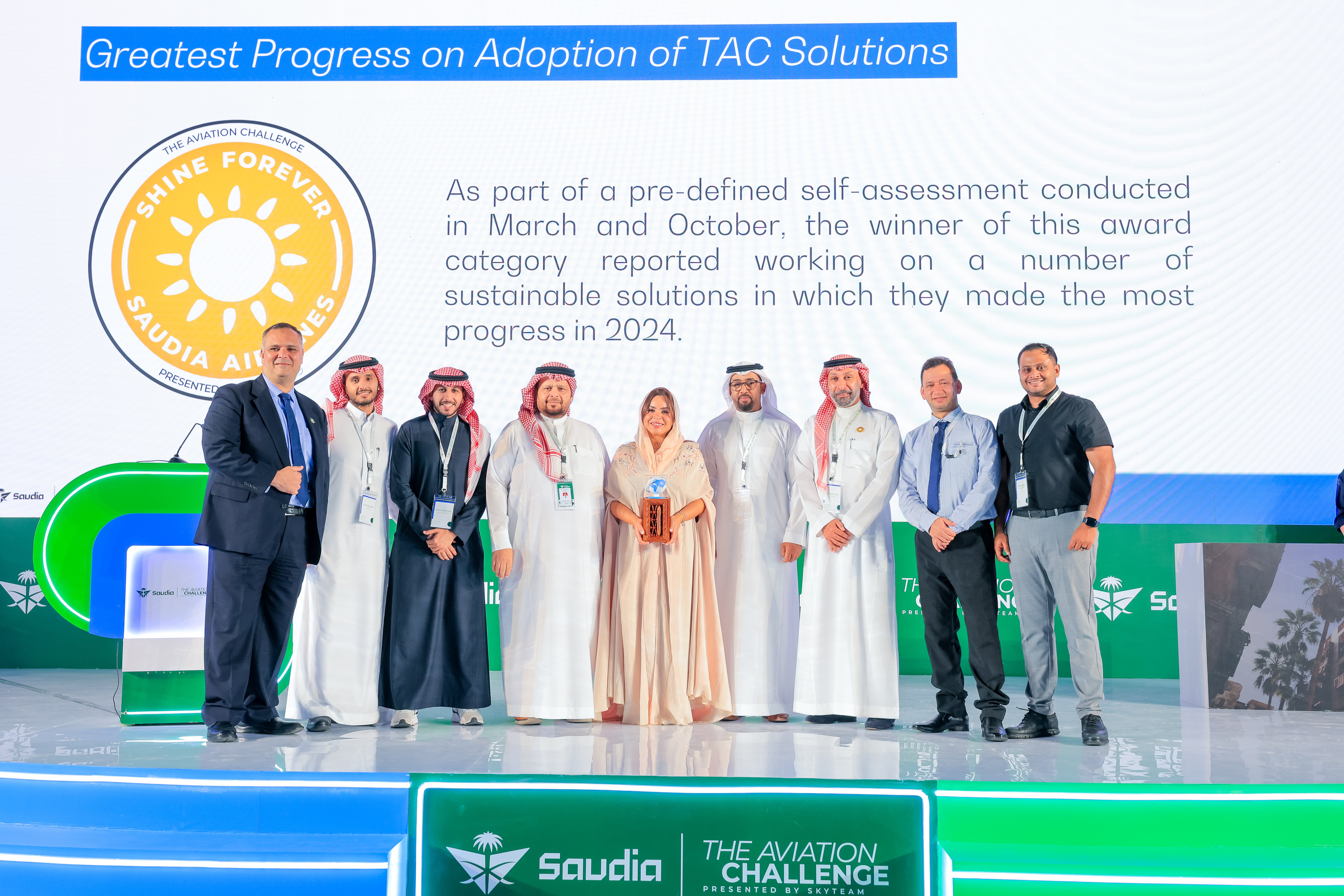
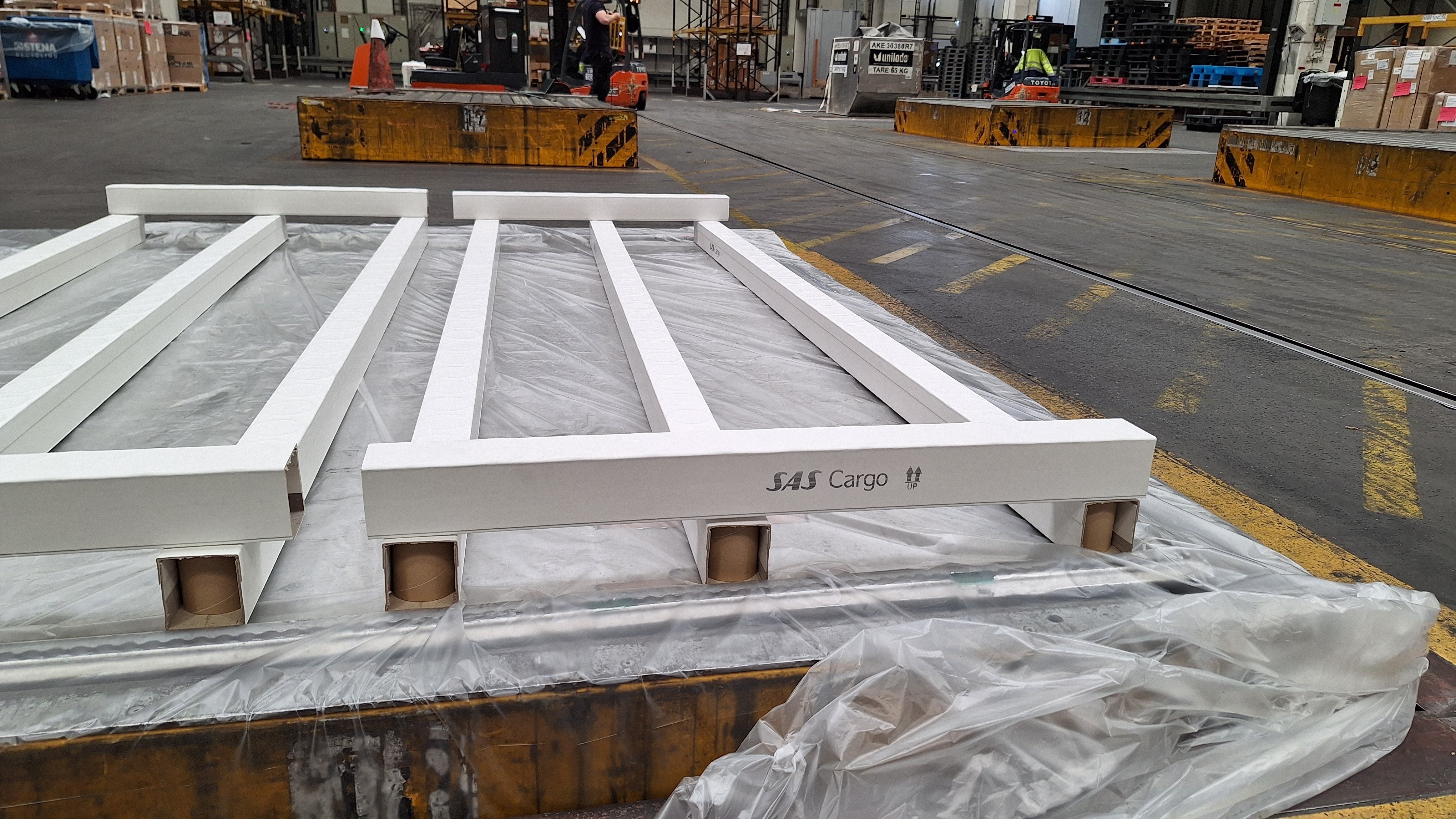
By introducing recyclable materials and optimizing logistics, Scandinavian Airlines (SAS) is taking tangible steps toward a more sustainable future. Aron Backström, SAS Vice President of Product and Loyalty, emphasized:
“As an airline, our primary goal is decarbonization, which involves making sustainable choices in fleet, fuel, and operations.”
Scandinavian Airlines (SAS) has introduced lightweight, recyclable cardboard support planks for cargo transport on its widebody aircraft. These planks improve cargo handling efficiency while reducing environmental impact. Because they weigh approximately 80 percent less than traditional wooden planks, they help lower the overall cargo weight, which leads to reduced fuel consumption and lower CO2 emissions.
For example, replacing a single 1-meter wooden plank with a cardboard alternative on a Copenhagen to Los Angeles (CPH to LAX) flight saves approximately 17 kilograms of CO2. In 2023 and 2024, this initiative helped SAS cut approximately 60,000 kilograms of CO2 emissions, with even greater savings expected in 2025.
In addition to fuel savings, these planks are made from recycled materials and can be reused multiple times before being recycled again as standard cardboard waste. Their lighter weight also makes them easier to handle, improving efficiency and reducing physical strain on cargo staff.
These planks are often less expensive than wood, increasing the incentive for airlines to adopt them. Unlike wooden planks, they do not require treatment against plant pests, making them compliant with ISPM 15 and IPPC regulations.
SAS initially tested these support planks on widebody flights departing from Copenhagen, a major hub for its long-haul operations. After seeing promising results, the airline is expanding their use to more flights as part of its broader commitment to sustainable aviation.
Development and Implementation of Cardboard Support Planks
To reduce aircraft weight and lower fuel consumption, SAS partnered with a supplier specializing in lightweight, recyclable cargo solutions. The cardboard planks are made from durable, recycled materials. Despite their lower weight, they have high load-bearing capacity and remain reliable even in wet conditions.
Several suppliers offer these planks. A quick search for “air cargo recyclable support planks” reveals providers who also offer other lightweight equipment, such as cardboard Euro pallets. These alternatives can also be used by cargo customers when building their own unit load device pallets.
Following the success of this solution, SAS is expanding the use of cardboard support planks across more flights. This supports its goal of making cargo transport more sustainable while also improving efficiency for ground staff.
By implementing measures like this, SAS continues to reduce its environmental footprint through practical, scalable innovations.

.jpg)
Air France has taken meaningful steps toward reducing its carbon footprint by transitioning its ground service equipment (GSE) from conventional fuel-powered models to electric alternatives. As of 2024, 70 percent of the GSE fleet operating in France is fully electrified. This initiative targets high-impact equipment categories, including: Aircraft tractors - used for aircraft pushback and towing Loaders and belt loaders - for efficient cargo and baggage handling Baggage tractors - for transporting luggage between the terminal and aircraft Ground power units (GPU) - supplying power to aircraft while parked Passenger stairs - enabling boarding and deboarding at remote stands without jet bridges This transition not only supports emissions reduction but also enhances ground operation efficiency and aligns with Air France’s broader sustainability commitments.
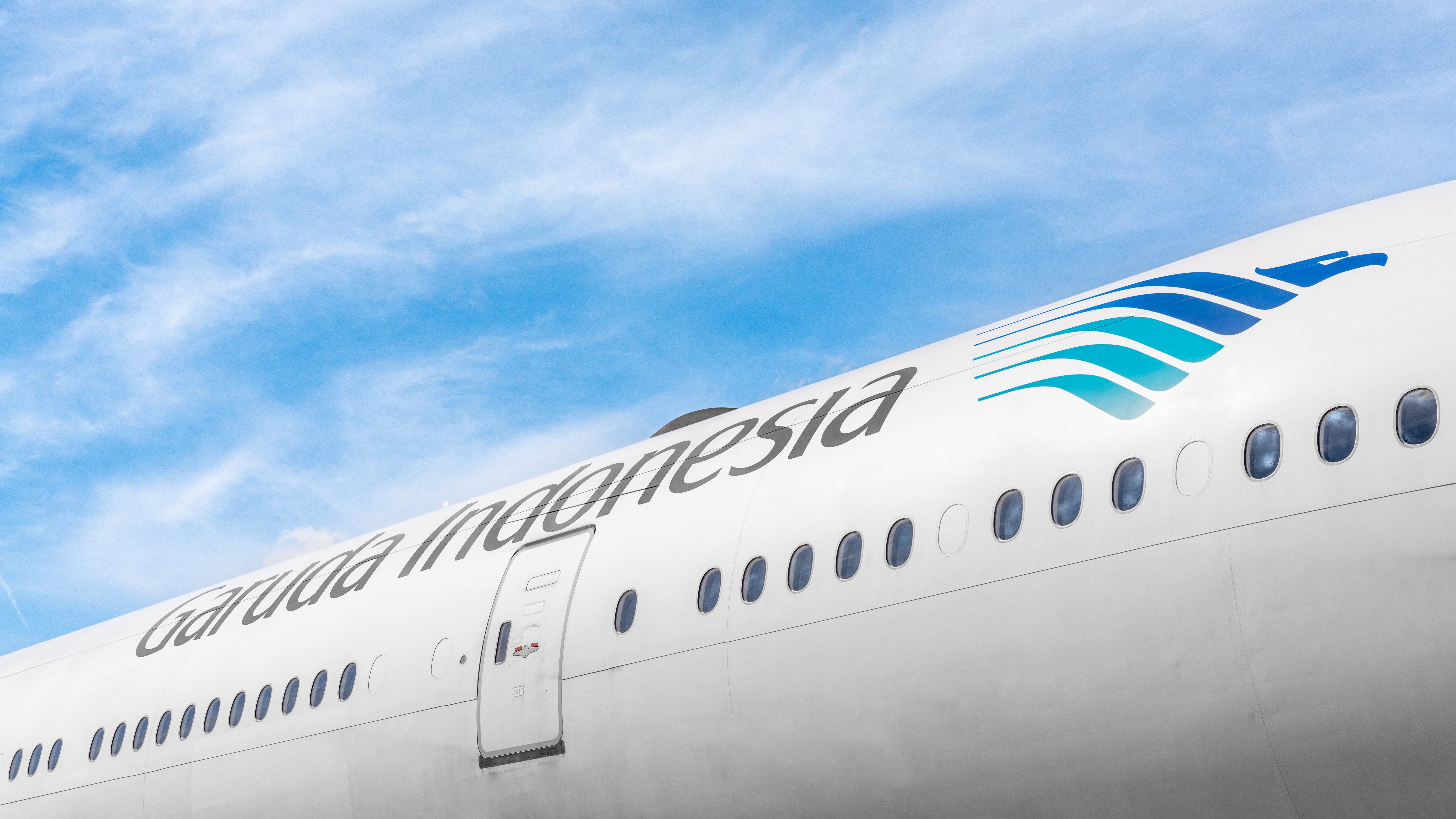
The Aviation Challenge Communities Of Practice
TAC’s Communities of Practice bring together everyone working to advance sustainability across key operational areas. These communities focus on connecting those who care - from senior managers to frontline staff. They unite people with hands-on experience, subject matter expertise, and a shared curiosity for change.Solutions are clustered within these communities, each representing a specific focus area. Some solutions are specific to one area, while others span multiple communities. Currently, 18 active Communities of Practice guide and structure solution development across TAC.
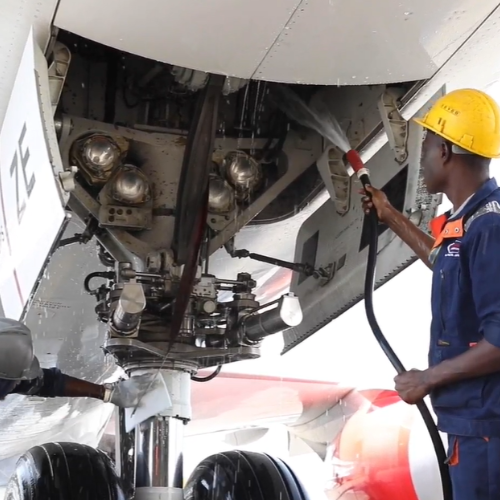
Aircraft Maintenance, Repair & Overhaul
How we manage aircraft, engines, and components has a major impact on flight sustainability. Smarter maintenance practices, repair strategies, and engineering solutions can reduce waste, extend equipment life, and cut emissions.
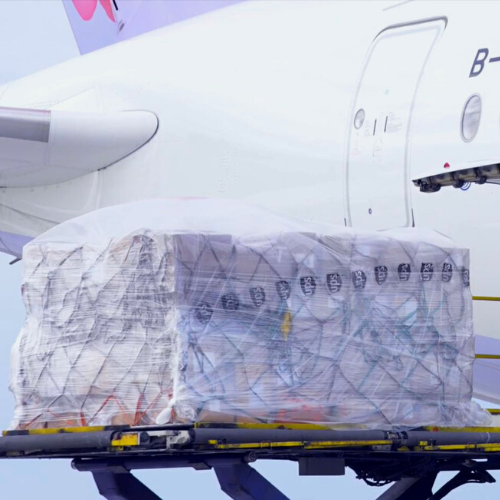
Cargo
Making cargo more sustainable is a challenge—but progress is within reach. From digitizing documents to using lighter materials, operational improvements can lower emissions and increase efficiency when applied with intention.
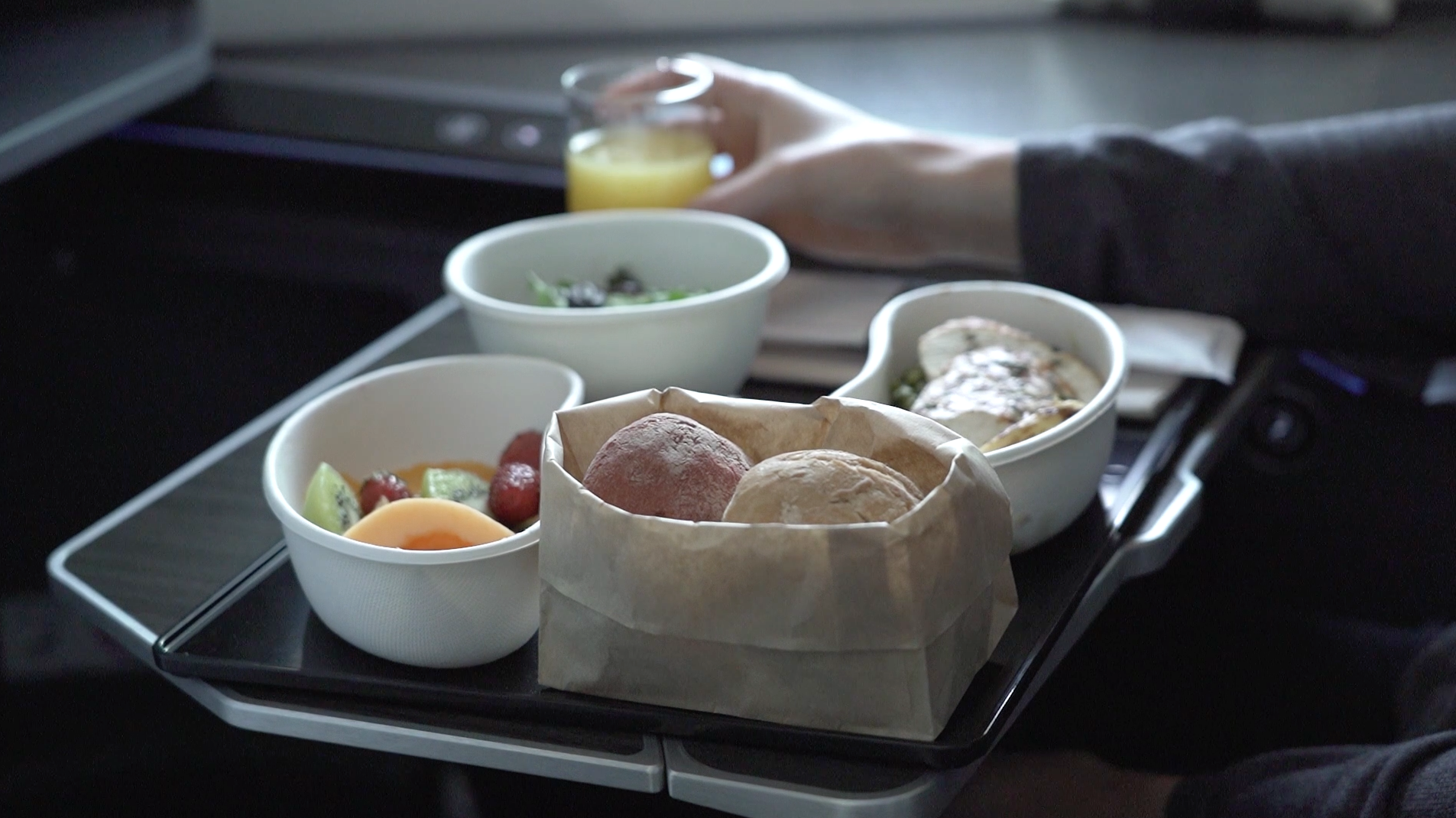
Catering
Catering has its own environmental footprint and there’s room to improve. By rethinking meals to balance customer satisfaction, health, and sustainability, operations can reduce waste and emissions without compromising on taste.

Employee Engagement
Involving employees at all levels is key to driving change. This community of practice focuses on unlocking internal knowledge, ideas, and energy to support innovation and sustainability from within the organization.
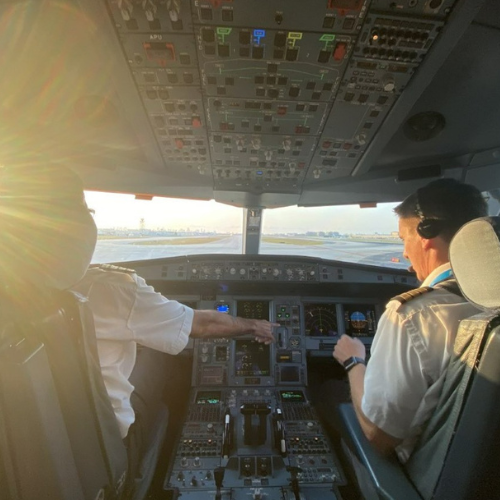
Flight Operations
From dispatching to eco-piloting, flight operations offer major opportunities to reduce emissions. Small changes in how we fly can lead to significant gains in sustainability.

Green IT
Green IT brings together all digital solutions that support sustainability, from smarter data use to energy-efficient systems. By optimizing digital tools and infrastructure, this area helps reduce emissions and improve operational efficiency.